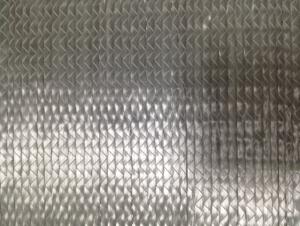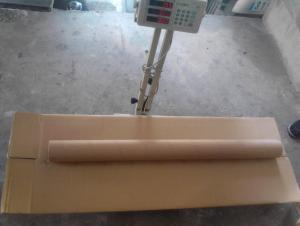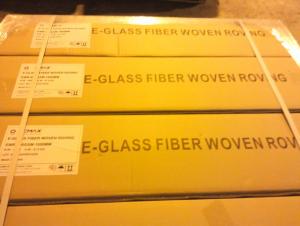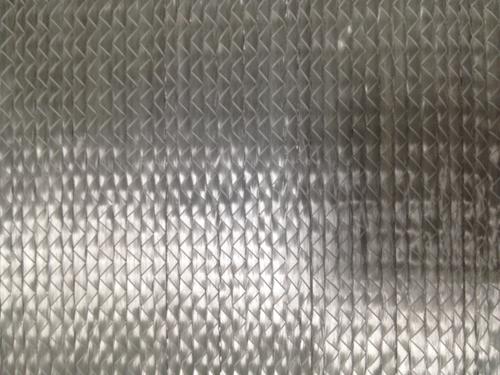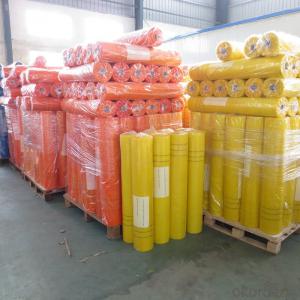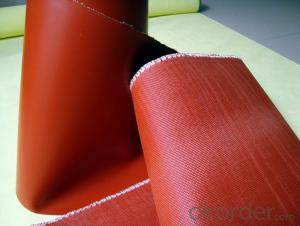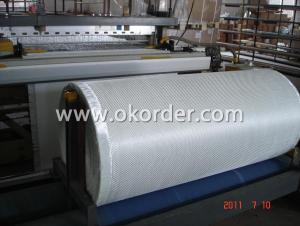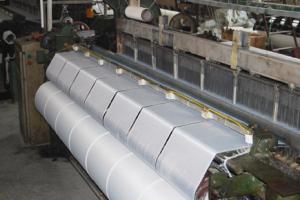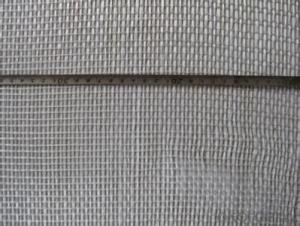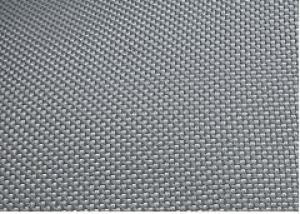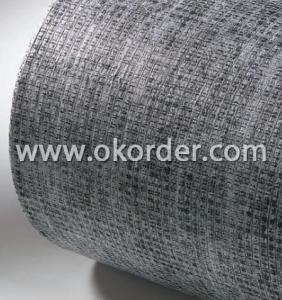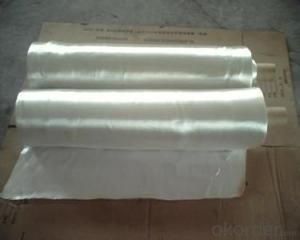HIGH QUALITY E-GLASS STITCH COMBO MAT-TTX
- Loading Port:
- China main port
- Payment Terms:
- TT or LC
- Min Order Qty:
- 1 kg
- Supply Capability:
- 100000 kg/month
OKorder Service Pledge
OKorder Financial Service
You Might Also Like
Brief Introduction: Fiberglass stitched combo mat (TTX)consists of two or more layers of fiberglass rovings which are stitch-bonded.one layer of rovings consists of parallel aligned roving and different layers of rovings can be oriented differently and have different linear density.The rovings specification,rovings orientation,number of rovings layers,mat width and roll diameter can be tailor-made according to customers' requirements. Characteristics 1. Manufactured by own factory SPECIFICATIONS
| ||||||||||||||||||||||||||||||||||||||||||||||||||||||||||||||||||||||||||||||||||||
FAQ
a.Pacage
Each Eglass stitched Combo Mat is wound onto a paper tube The roll is wrapped up with plastic film,and then packed in a cardboard box. The rolls can be vertically or horizontally placed. For transportation, the rolls can be loaded into a container directly or on pallets.
b.Product storage:
Unless otherwise specified, CHEMICAL FIBER GRIDDING CLOTH should be stored in a dry, cool and rain-proof area. It is recommended that the room temperature and humidity should be always maintained at 15℃~35℃ and 50%~75% respectively.
- Q: What are the different thickness options for fiberglass fabric?
- Different thickness options are available for fiberglass fabric to meet different needs and applications. Typically, fiberglass fabric thickness is measured in ounces per square yard (oz/yd²) or grams per square meter (g/m²). Fiberglass fabric comes in a range of thickness options, from lightweight to heavy-duty. Lightweight fiberglass fabrics usually have a thickness of approximately 0.5 oz/yd² (17 g/m²) to 1.5 oz/yd² (51 g/m²). These fabrics are commonly used in industries where weight is a concern, such as aerospace or lightweight repairs. Medium-weight fiberglass fabrics have a thickness that ranges from around 2 oz/yd² (68 g/m²) to 4 oz/yd² (136 g/m²). These fabrics offer a good balance between strength and flexibility, making them suitable for various applications. They are commonly utilized in boat building, automotive repairs, and general reinforcement tasks. On the other hand, heavy-duty fiberglass fabrics are thicker and more robust, typically ranging from 6 oz/yd² (204 g/m²) to 10 oz/yd² (340 g/m²) or more. These fabrics provide excellent strength and durability, making them ideal for demanding applications like industrial insulation, heavy machinery reinforcement, or construction projects. It is essential to consider that the thickness of fiberglass fabric can impact its handling characteristics, as well as its overall strength and flexibility. Hence, it is crucial to choose the appropriate thickness option based on the specific requirements of the project or application.
- Q: What are fiberglass fabrics made of?
- Fiberglass fabrics are made of thin strands of glass, typically composed of silica, which are woven together to form a flexible and durable material.
- Q: Is fiberglass fabric suitable for use in aerospace composites?
- Yes, fiberglass fabric is suitable for use in aerospace composites. Fiberglass is a widely used material in the aerospace industry due to its excellent strength-to-weight ratio, durability, and resistance to corrosion. It offers high tensile strength and stiffness, making it ideal for applications that require structural integrity and load-bearing capabilities. Additionally, fiberglass fabric can be easily molded into complex shapes, allowing for the production of intricate aerospace components. Furthermore, fiberglass composites exhibit good thermal and electrical insulation properties, which are essential in aerospace applications where temperature fluctuations and electrical conductivity need to be controlled. Overall, fiberglass fabric is a reliable and proven material that has been successfully employed in the construction of various aerospace components, such as aircraft wings, fuselages, and interior panels.
- Q: Can fiberglass fabric be used for insulation in clean rooms?
- Yes, fiberglass fabric can be used for insulation in clean rooms. It is a commonly used material in clean room environments due to its excellent thermal insulation properties and resistance to contamination.
- Q: How is fiberglass fabric used in the production of electrical insulation tapes?
- Fiberglass fabric is commonly used in the production of electrical insulation tapes due to its excellent electrical insulation properties. The fabric is made from fine strands of glass fibers that are woven together to create a strong and durable material. In the production of electrical insulation tapes, fiberglass fabric is often coated with a layer of adhesive material, such as silicone or acrylic, on one side. This adhesive layer allows the tape to adhere to various surfaces and provides additional electrical insulation. The fiberglass fabric acts as a reinforcement layer in the tape, providing strength and stability. It helps to prevent the tape from tearing or stretching under tension, ensuring that it remains intact even in harsh environments. The fabric also provides resistance against high temperatures, chemicals, and abrasion, making it suitable for use in electrical applications. Furthermore, fiberglass fabric has excellent dielectric properties, meaning it can withstand high voltage without conducting electricity. This makes it an ideal material for electrical insulation tapes, as it helps to prevent electrical currents from leaking or short-circuiting. Overall, the use of fiberglass fabric in the production of electrical insulation tapes enhances their electrical insulation, strength, and durability, making them reliable and efficient for various electrical applications.
- Q: How does fiberglass fabric perform in terms of dimensional stability?
- Fiberglass fabric exhibits excellent dimensional stability, making it highly reliable and suitable for a wide range of applications. Thanks to its unique composition of woven glass fibers, it possesses remarkable resistance to changes in shape or size, even under extreme temperature fluctuations or mechanical stress. This stability ensures that fiberglass fabric maintains its original dimensions and shape over time, allowing it to consistently meet the required specifications and performance criteria. Additionally, its dimensional stability makes fiberglass fabric ideal for applications where precise measurements and accuracy are necessary, such as in aerospace, automotive, and construction industries. Overall, fiberglass fabric's exceptional dimensional stability is one of its key attributes, contributing to its widespread use and popularity across various sectors.
- Q: How do fiberglass fabrics perform in terms of sound absorption?
- Fiberglass fabrics possess excellent sound absorption properties, known for their ability to effectively diminish sound wave transmission and minimize reverberation within a given space. The composition and structure of these fabrics are unique, allowing them to trap and absorb sound energy, converting it into heat energy by means of frictional losses. This sound-absorbing capability makes fiberglass fabrics an ideal choice for noise control and acoustic applications. They are commonly employed in areas where soundproofing is of utmost importance, such as recording studios, theaters, concert halls, and industrial facilities. Moreover, fiberglass fabrics offer versatility and can be utilized in various forms, including panels, curtains, or wall coverings, enabling flexibility in design and customization. Ultimately, fiberglass fabrics have consistently proven their efficacy in enhancing sound quality and reducing undesired noise across diverse environments.
- Q: Characteristics and advantages of polyester glass fiber cloth
- Non shrinkingPolyester glass fiber cloth in the high temperature construction environment to maintain no deformation, no shrinkage.
- Q: How is fiberglass fabric used in the production of aerospace components?
- Fiberglass fabric is commonly used in the production of aerospace components due to its lightweight and high-strength properties. It is used as a reinforcement material in the manufacturing of composite parts, such as aircraft wings, fuselage panels, and structural components. The fabric is impregnated with resin and then cured to form a rigid and durable composite structure. This combination of fiberglass fabric and resin provides excellent strength-to-weight ratio, corrosion resistance, and thermal stability, making it ideal for aerospace applications.
- Q: How does fiberglass fabric perform in cryogenic temperatures?
- Fiberglass fabric performs well in cryogenic temperatures due to its inherent properties. Cryogenic temperatures refer to extremely low temperatures below -150°C (-238°F), typically found in applications such as aerospace, medical, and scientific research. Fiberglass fabric is known for its excellent thermal insulation properties, which allow it to effectively withstand and protect against extreme temperature fluctuations. This insulation capability enables the fiberglass fabric to maintain its structural integrity and performance even in cryogenic conditions. Furthermore, fiberglass fabric exhibits low thermal conductivity, meaning it does not easily transfer heat. This characteristic is crucial in cryogenic applications as it helps to minimize heat transfer between the extremely cold environment and surrounding components. In addition to its thermal properties, fiberglass fabric also possesses high tensile strength, durability, and resistance to chemical corrosion. These attributes make it highly suitable for use in cryogenic environments, where materials must withstand extreme conditions and maintain their mechanical properties over time. Overall, fiberglass fabric offers reliable performance and protection in cryogenic temperatures, making it a preferred choice in various industries that require materials capable of withstanding such harsh conditions.
Send your message to us
HIGH QUALITY E-GLASS STITCH COMBO MAT-TTX
- Loading Port:
- China main port
- Payment Terms:
- TT or LC
- Min Order Qty:
- 1 kg
- Supply Capability:
- 100000 kg/month
OKorder Service Pledge
OKorder Financial Service
Similar products
Hot products
Hot Searches
Related keywords
